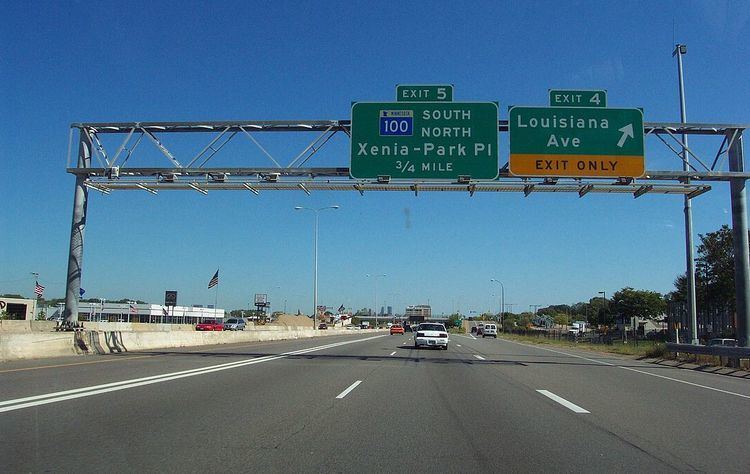 | ||
MnPASS is an electronic toll collection system operated by the Minnesota Department of Transportation.
Contents
The MnPASS transponder has a minimum first time charge of US$40, and there is a monthly fee of $1.50 to lease the transponder. Rush hour tolls for I-394 are usually between $1 and $4, though highly congested periods may see it go as high as $8. The price of the toll is determined by the density of the traffic. When there is more traffic, the toll is priced higher. Electronic sensors monitor the traffic density and tolls are changed every three minutes. During non-rush hours, tolls are $0.25 for the reversible lanes between I-94 and Highway 100, and free (signed simply as "OPEN") between Highway 100 and Interstate 494. During "OPEN" periods, any single passenger vehicle may use the lane regardless of whether or not they have a transponder installed.
Currently, the MnPASS is not interoperable with other transponder-based toll systems, such as E-ZPass, I-Pass, or FasTrak.
I-394
There are two high-occupancy toll lanes at the center of Interstate 394. Prior to May 16, 2005, they had been traditional high-occupancy vehicle (HOV, or carpool) lanes, allowing buses, motorcycles, and vehicles with two or more occupants to use them during rush hour periods, while single-occupancy vehicles were not permitted. Now, drivers riding alone can use the lanes at any time but must have a MnPASS electronic toll collection transponder. However, due to bottlenecks in a few places, the Minnesota Department of Transportation relaxed restrictions to allow all traffic in at least one area during non-rush hour times.
Starting at the W. Wayzata Blvd overpass, following the entrance from Eastbound County Road 15, the U.S. Route 12 HOT lane is a road-labelled, enforceable open access lane. This enforceable lane then continues in the transition to Eastbound I-394, where an official overhead MNPass sign is posted. From the I-494 overpass to Minnesota State Highway 100, the lanes in each direction are separated from traffic by double white lines. Between MN-100 and Interstate 94 near downtown, the two lanes are combined into a reversible expressway in the median that is separated from the eastbound and westbound lanes by a concrete barrier. This segment changes directions to accommodate the traffic flow at different times of day. In the morning until 1PM it is open to eastbound downtown-flowing traffic, while it is open to westbound traffic beginning at 2PM through the evening.
I-35W
The current HOV lanes on I-35W between Burnsville and Richfield are being converted to HOT and a priced dynamic shoulder is being added northbound from 46th Street to downtown Minneapolis. Both sections opened in October 2009. The gap between Richfield and 46th Street will be filled with a HOT lane as part of the I-35W crosstown reconstruction project, to open late 2010.
I-35E
In 2016, a single MnPASS lane was added in each direction of I-35E between Cayuga Street and I-694.
I-94
As part of the traffic restoration project following the I-35W bridge collapse, a portion of I-94 between I-35W on MN 280 was restriped from three standard 12-foot lanes and a bus shoulder to four 11-foot lanes. This was left in place after the new bridge was opened but eventually a portion was returned to the original configuration due to delays buses were encountering. A study is currently under way to determine the feasibility of managed lanes on the entire stretch between downtown Minneapolis and downtown St. Paul.
